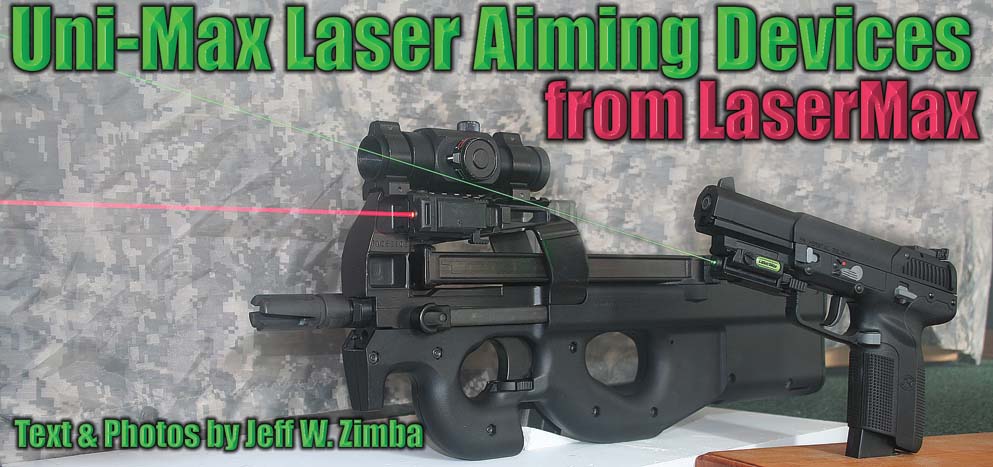A Red Uni-Max Laser Sight on an FN PS90 SBR behind an FN Five-seveN outfitted with a Green Uni-Max Sight. The beams you see are as captured in the photograph and are not computer generated.
By Jeff W. Zimba
In the last few decades, laser-sighting technology has advanced at an amazing pace. Laser sights made the transition from expensive and large to reasonably priced and very compact, and now it has become clear that laser aiming devices have evolved into yet another category; that of affordable and undetectable.
The days of heavy laser units with long lengths of exposed wires is far in the past. One of the original LaserMax aiming devices actually replaces the internal guide rod in several popular pistols, including models of the Glock, Beretta and SIG Sauer. Since this laser sight is self contained and completely internal, the host handgun is absolutely compatible with most standard holsters and accessories. This is a huge plus for the end user. (For a review of the LaserMax Guide Rod Lasers, see Small Arms Review, Vol. 12, No. 1, October, 2008.)
Since the laser sighting market is not limited only to pistols, LaserMax offers several models in numerous configurations from traditional shooting applications to scientific and aerospace uses. Colors include High-Vis Red-Orange, Green and Infrared with output power from 0.7mW to 100mW and wavelengths from 635nm to 1550nm.
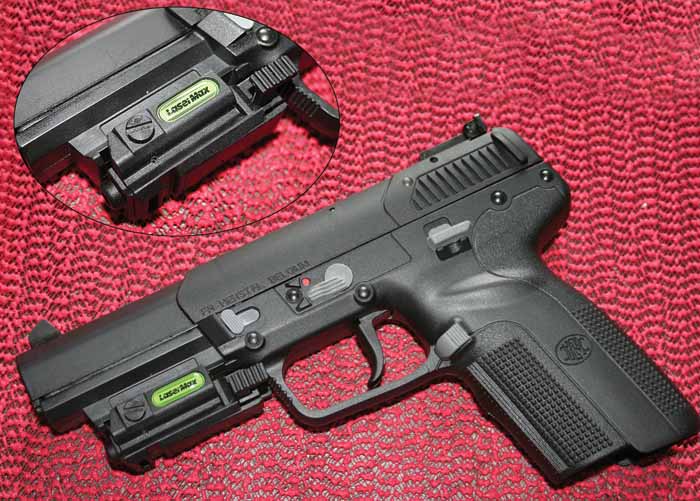
Since rail systems are so prevalent in military-style firearms, we were particularly interested in evaluating the Uni-Max rail mounted lasers. Actually resembling a small portion of Picatinny rail, the Uni-Max Laser is slightly over 2.25 inches in length and weighs less than one ounce with most models. At less than 3/8 of an inch thick, this unique sight actually mounts inside a very small section of Picatinny or Weaver rail and incorporates a rail-mounting surface in its design. This allows the mounting of an additional accessory on the laser sight itself so there is actually no loss of rail space when mounting the Uni-Max laser.
The Uni-Max laser sight is currently available in four models. The LMS-UNI emits a 635nm red laser beam. The LMS-UNI-G emits a 532nm green laser beam. The LMS-UNI-IR and LMS-UNI-IR+ both emit an 850nm infrared laser beam for use with night vision equipment and are only available to qualified law enforcement and military end users. All red and IR Uni-Max lasers allow the shooter to select one of two modes of operation; modulated (pulsed) beam or continuous wave (steady on) beam. Owners also have three options for activating the Uni-Max. It is shipped with a rear-mounted, constant-on sliding switch that can be replaced with a momentary activation pressure switch with either a 6-inch or 10-inch cord. When using the constant-on switch the red and infrared laser automatically turns off after thirty minutes to preserve battery life. The green laser turns off after ten minutes. When using the pressure switch, the laser is only momentarily on when activated for optimum battery life. Battery life varies from 1-hour to 6 hours of continuous operation depending on the color and mode.
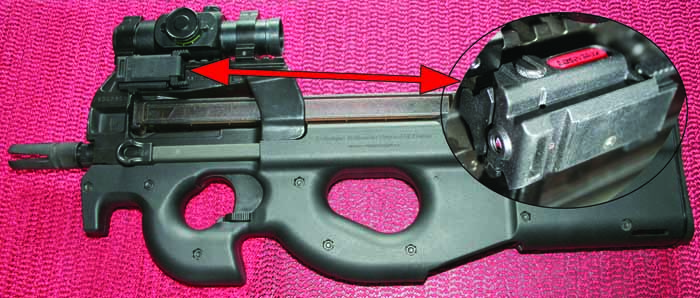
Pulse Beam vs. Constant Beam
LaserMax cites studies that show the human eye will recognize a moving object much faster than a stationary object – including a dot emitted from a laser. The higher visibility created by the pulsating beam allows for a much faster target acquisition and, as a residual effect, the life of the battery is doubled.
Although the pulsating beam seems a bit odd or almost awkward when first utilized, it is generally preferred over the constant beam after a very short amount of time and becomes the setting of choice.
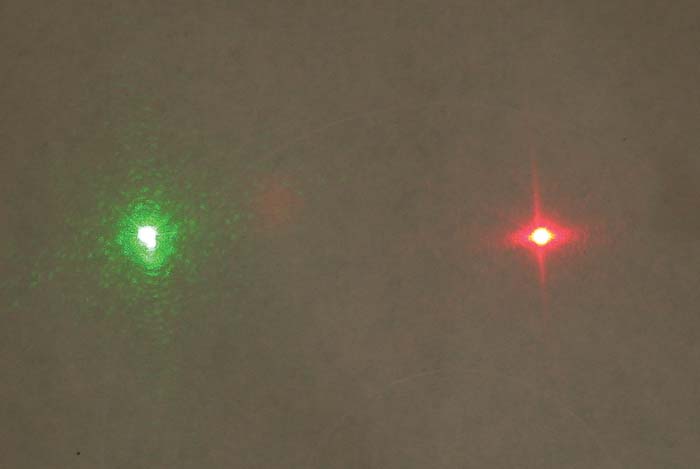
For those who do prefer the solid dot, changing the operating mode from the preset pulsating beam to the traditional constant beam is a simple process. The beam selection port is located in the battery compartment and a clockwise turn with the supplied Allen wrench will change the setting. It is easily reversed with a counterclockwise turn.
Power Switch Options
All Uni-Max sights are shipped with an ambidextrous sliding rear power switch. The laser is activated by sliding the switch either to the left or the right so it will accommodate almost any rail location and both right-handed and left-handed shooters. When the switch is activated the green laser will stay on for 10 minutes, the red and infrared will remain on for 30 minutes, and will automatically shut off. The laser is turned back on by sliding the switch to the off position and back on again. This is an excellent feature that prevents battery drain from inadvertently activating the laser during transportation or storage.
If it is preferred that the laser only be on momentarily instead of in a constant mode, a pressure activated switch is available to replace the factory switch. The pressure switches are available with a 6-inch or 10-inch cord to accommodate many mounting options.
Replacing the factory switch with the desired pressure switch is a simple process. The battery compartment cover is removed and two screws are removed from the sliding switch. The sliding switch is removed to reveal a pair of contact pins. The new pressure switch backing plate replaces the sliding switch and is secured with two screws and the battery compartment cover is replaced. The pressure pad portion of the switch is mounted to the firearm with a supplied adhesive and Velcro pad after the surface is thoroughly cleaned with the included wipe.
The newly replaced back plate portion of the pressure switch has a master power switch that can be turned off to prevent activation during transport or storage.
Laser Color Options: It Isn’t Easy Being Green
The color red is the predominant color for most lasers because of ease in the manufacturing process. Several options are readily available, in several types in many output ranges.
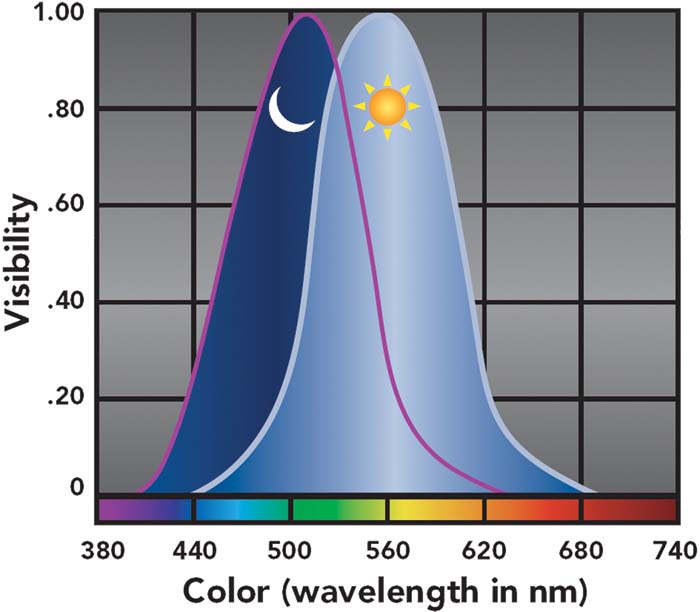
Even though several colors are possible, the different colors require different gain media or materials to make the laser. Gain media is required in lasers to give a strong source of light. The gain media could include gases, different types of crystals, special glasses and even ceramics.
Blue diode lasers for example, (usually in the range of 400-500nm) use a different type of crystal than red lasers. The blue crystals are not as durable or long-lived, and performance isn’t quite as good as those in the red spectral region.

Much more difficult to make than the red versions, green lasers are manufactured by LaserMax using a series of crystals and filters. These are specifically designed and built into a system that is not sensitive to recoil like some of the other green lasers on the market today. Unlike many other manufacturers of green lasers, LaserMax also safely filters out the dangerous IR light, which is emitted from green lasers.
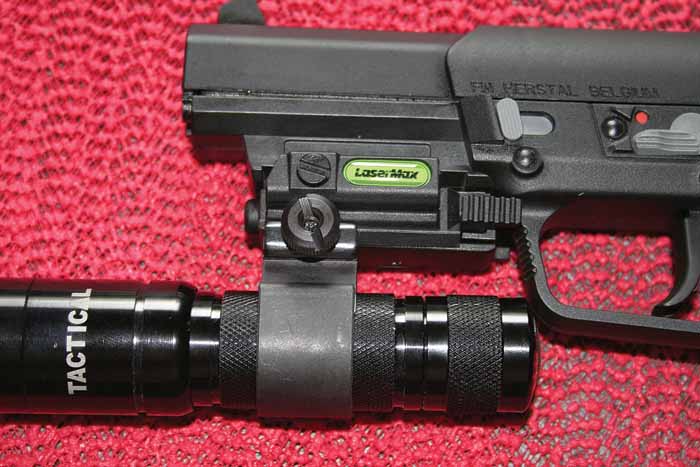
Green lasers require more power due to the resonator loss and filtering, and that is why the battery life is quite a bit less than with the red counterparts. Many green lasers do not use such high-end components and although they make great pointers, they will not stand up to the recoil of being mounted to a firearm. Many users have had experience with fast failing green lasers of lesser quality than the Uni-Max system and might tend to shy away from green lasers in general. The Uni-Max system has addressed this problem and performance is greatly improved.
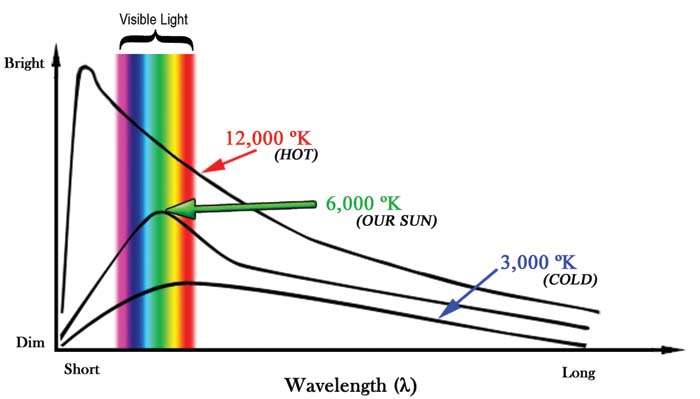
Green lasers have some distinct characteristics and benefits over standard red lasers. Most of the benefit is simply the range where our eyes function the best in bright light. Though our eyes are capable of seeing the colors of the rainbow in bright light, the peak visibility is in the green spectrum. Since our eyes are approximately 4-times more sensitive to green in bright light than they are to red light, darker areas are even MUCH more pronounced. A quick look at the dot from a green laser in medium or low light will immediately show the difference. Since green is so much more visible in bright light and dim light, we can see it much further, and when combined with the pulsating beam in the Uni-Max sight, target acquisition is extremely fast.
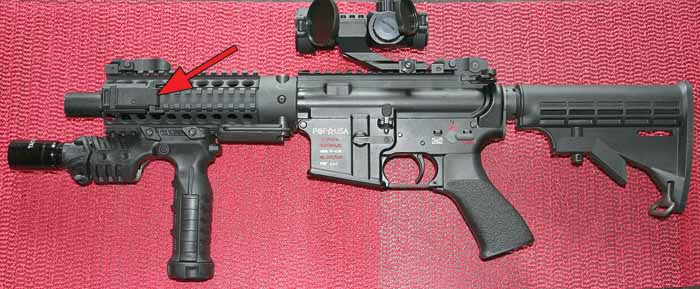
The Uni-Max Sight is available in 4 color beam options: red, green and two infrared options. The red Uni-Max has a power output level of 5mW in the 635nm wavelength. It can be switched from pulsed beam to constant beam. The green Uni-Max has a power output level of 5mW in the 532nm wavelength and operates in pulse beam only. The two IR lasers are in the 850nm wavelength. The standard model is optimized for CQB use with NVG. The IR+ model is optimized for longer-range shooting with NVG. Both IR units are selectable from pulse beam to constant beam use. As previously mentioned, none of the IR units are available to anyone except qualified and approved LE and military purchasers.
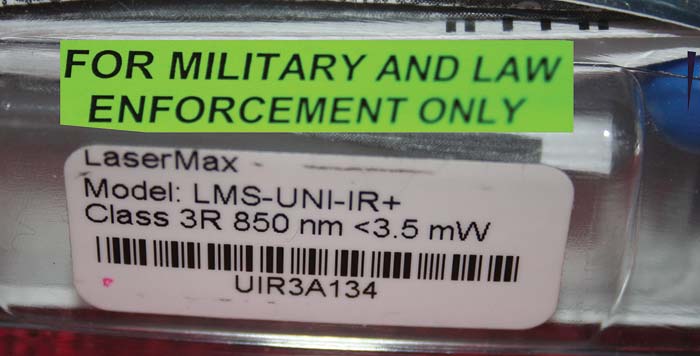
Weapons Sight Options
Laser sights can be used as an accessory sight instead of primary or only sight. It is very beneficial to have a standard red-dot-type or holographic sight on a rifle in addition to the Uni-Max sight. They can be co-witnessed for the same point of aim and different uses in different situations, or even sighted in at different distances giving the shooter two completely different aiming points for two different distances. This can effectively double the usefulness of the system by adding no more than an ounce in weight. For those who have Back Up Iron Sights (BUIS) already co-witnessed with their red-dot-type sight, they can still be used as normal as the tiny Uni-Max will actually take up no additional room on most rail systems.
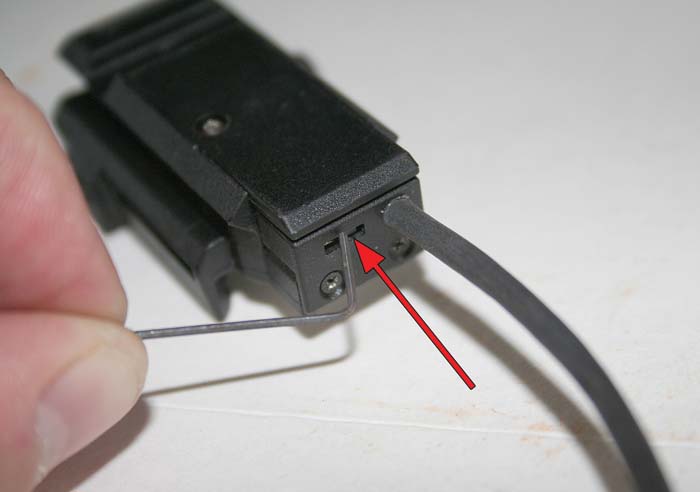
Space Saver
Some firearms have more available rail space than will ever be needed, but other guns have only a precious few inches. The FN Five-seveN pistol is a great example. With only a small rail in front of the trigger guard, under the barrel, most laser sights would delete the opportunity to mount another much-needed accessory, like a tactical flashlight. With the Uni-Max, the flashlight, in this case, can be mounted directly to the laser sight so both can be utilized.
Conclusion
When the Uni-Max lasers arrived for testing it soon became clear that they were quite different from those tested in the past. With a built-in rail and several power, color and beam options they are really not like anything tested in the past. On the three firearms they were mounted on for testing, the Uni-Max lasers all performed fantastic. The red Uni-Max was tested on an FN-PS90 SBR and the combination even won 1st place in its class in a shooting competition it was entered in. The same combination also won 2nd place in the same class, being fired by someone else. The green Uni-Max was mounted on an FN Five-seveN pistol and also performed flawlessly. The IR unit was mounted to a suppressed .22 LR dedicated M16, and when assisted with NV gear, it worked excellently.
The bottom line is they are small, light, and affordable and offer a ton of functional options. With a starting retail price of $189 for such technological advancement in laser aiming devices, these are certain to score a bulls-eye with any shooter who has an interest in a laser sight.
Additional Information
It isn’t often mentioned other than in the sources area of an article, but the website LaserMax has built is so full of information that it needs to be brought to everyone’s attention. This professional website is full of technical information about every product in the catalog, and lots of generic information about laser sights in general. With a complete product catalog and several videos, reviews, training information and lots of testimonials, it is a great reference source for an abundance of laser related information. A listing of retailers who sell LaserMax sights will be beneficial to anyone interested in obtaining one. Training and certification is offered through LaserMax with information available on line combined with information on reduced pricing and available grants for LE, Military, and Certified NRA Instructors. If you go to the website at www.lasermax.com, be prepared to spend some time there and expect to come away with an education.
LaserMax
Dept. SAR
3495 Winton Place, Bldg. B
Rochester, NY 14623
Phone: (800) 527-3703
Fax: (585) 272-5427
www.lasermax.com
| This article first appeared in Small Arms Review V12N2 (November 2008) |



